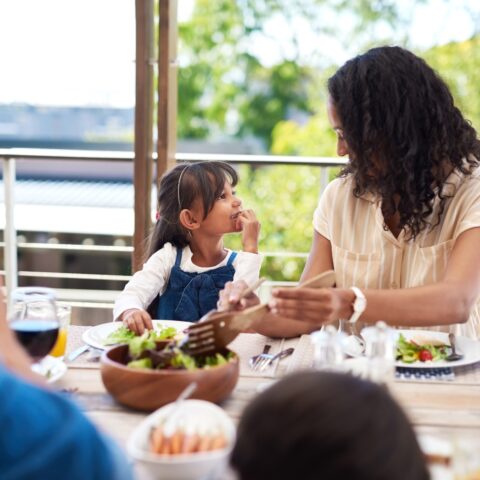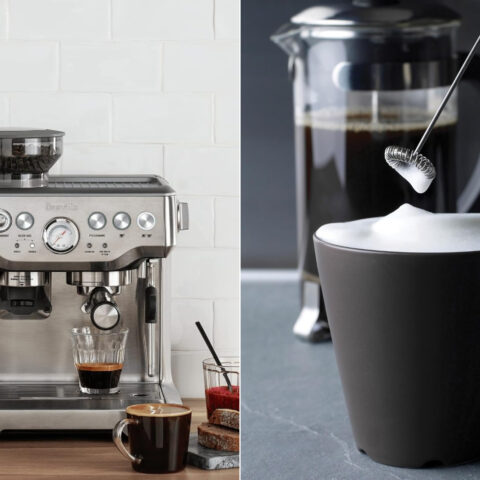5 Tips for Trying The Paleo Diet on a Budget

When it comes to adopting a Paleo lifestyle, you don’t have to stress about breaking the bank. The Paleo Diet® is often labeled as an “expensive diet,” but that’s really just a mis-label considering the bulk of the diet consists of eating healthy fats and oils, vegetables, and fruits. Nothing fancy, just the basics!
We all know that being on a tight budget can limit your grocery list and make it hard to eat healthy. So we have a few tips and tricks that can help you stay within your budget, especially when you’re first starting out. Here’s some of our favorite ways to live The Paleo Diet on a budget!
1. Buy Seasonal Produce
Do some planning and research to find out which Paleo-friendly items are in season during different times of the year. Seasonal produce is usually sold at a reduced price, while off-season produce can be very expensive due to shipping and availability costs. So, while you may love cherries, buying them in February when they’re twice the price isn’t great budgeting. Know what is in season as you do your weekly grocery shopping, and you can save a lot of money. It can also help to shop at your local farmers market, where you can get the best of both worlds, cheap and fresh produce!
Some good websites we like to use are The USDA Seasonal Produce Guide, The Seasonal Food Guide, and your local farmers market’s website.
Summer: Cherries, cucumbers, bell peppers, blueberries, and mangoes.
Fall: Cranberries, ginger, grapes, kale, pumpkin, cauliflower, and broccoli.
Winter: Grapefruit, leeks, sweet potatoes, oranges and winter squash.
Spring: Avocados, asparagus, mushrooms, rhubarb, and strawberries.
2. Grow Your Own Produce
Consider starting a garden and growing your own fresh fruits and veggies. It sounds like a daunting task, but you can grow a lot of smaller produce and herbs in the comfort of your own kitchen. It can even become a pleasurable activity that you can do to easily add flavor to all your dishes! Be sure to consider the temperature, climate, and environment where you live to make sure the produce you want to grow is compatible.
Easy-to-Grow Produce
Lettuce
This leafy green can be grown at any time of the year! Just be sure to keep your lettuce plant from getting too much heat because they like a cooler environment.
Peppers
Most peppers are pretty low maintenance. All they need is water, sunlight, trimming around the edges, and a little TLC.
Tomatoes
All you need is a plant cage, water, and direct sunlight for eight hours!
DIY tip: buy one sheet of remesh, three stakes, and zip ties in order to save money and make your own plant cage!
Want to learn more gardening tips? Check out our gardening article, Grow Your Own Food.
3. Buy Less Expensive Cuts of Meat
Meat is an important part of The Paleo Diet and provides your body with essential nutrients that you can’t get from plant sources and much-needed high-quality protein. After all, your body uses protein to build tissue, make enzymes, and create antibodies that fight off infections. You may wonder which cuts of meat are generally cheaper. Think bone-in and ground meat. The butcher has less prepping to do with the bone-in or ground meat before selling it, which makes it a lot cheaper.
But keep in mind, when purchasing this meat, we recommend that you buy from ethical, eco-friendly sellers where you can see how the animals were treated. If you live in an area with farms and ranches, then take advantage of this and look out for terms such as grass-fed, free-range, and hormone-free. If farms and ranches are not an option, then check your local grocery stores for specials and sales on ethical meats. Overall, try avoiding fatty feedlot meat to keep your protein Paleo approved!
Also keep in mind that while meat is an important part of The Paleo Diet, it is not the dominant part. Balance the expensive meats with ample servings of nutrient-dense fruits and vegetables.
4. Buy Your Groceries in Bulk
While pursuing a Paleo lifestyle, it can be helpful to be tactical in planning out your grocery list. Planning out your week of recipes and meals will allow you to be efficient in your shopping. You can use your list to buy in bulk and even use ingredients for multiple recipes throughout the week. Anything left over can be frozen or refrigerated and eaten the following week!
When purchasing meat in bulk, you’ll want to freeze it so that you can prepare it at your own pace. Some other things that can be bought in bulk are eggs, frozen fruit, vegetables, olive oil, and nuts. Check out your local bulk stores, farms, and ranches for ideas.
Want to know more details about freezing and storing fresh foods? Read through our article on How to Freeze Meat, Fish, and Produce.
5. Plan Ahead of Time
To try The Paleo Diet on a budget, plan the meals and snacks that you want to eat ahead of time, keep a list of the foods that are staples in your diet, and finally keep track of the amount of money that you spend. Planning takes out the hassle of trying to figure out what to eat at the last minute, which can be difficult, especially with a family.
Meal prepping is a great way to plan ahead. It makes it easier and cheaper to eat Paleo! After buying all your groceries in bulk with your recipes in mind, you can start preparing your meals for the week. Start by dicing your veggies and fruits and then take the time to store them away properly. Your meats and proteins can be cooked and stored in the fridge. All you must do is plan ahead!
The Paleo Diet is a budget-friendly way of eating and living your life. Keeping these tips in mind can help make things easier whether you’re a beginner or have been Paleo for several years. Take your time, do your research, and focus on living a healthy and fulfilling life!
Isabella Mead
Isabella Mead is the Assistant Project Manager at The Paleo Diet and has experience in creating digital content for lifestyle and nutrition brands.
More About The Author




